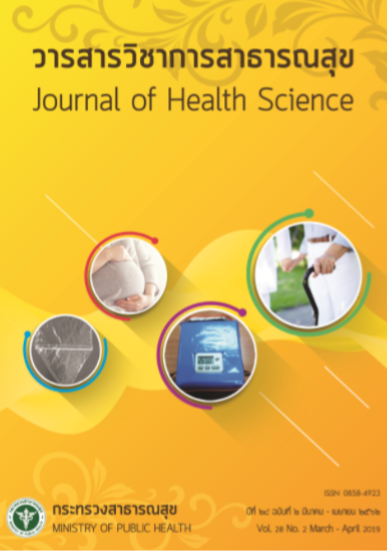Result of the Follow-up on Growth and Development Progress in Premature Babies in the Developmental Care Model, and the Assessment of Risk Factors of the Delayed Development, Phrae Hospital, Thailand
Keywords:
premature baby, growth, development, developmental care modelAbstract
The objectives of this study were to follow-up on the growth and development among preterm infants who were taken care under the developmental care model of Neonatal Intensive Care Unit, Phrae Hospital, Thailand; and to assess the risk factors assocaited with delayed development. It was conducted during among children borne during 1 October 2009 and 30 September 2014 by assessing the growth and development indicators which included physical growth, development, visual and hearing capabilities using the criteria set by Department of Health, Ministry of Public Health (MoPH) together with the MoPH’s Development Surveillance and Promotion Manual (DSPM). Active follow-up and assessment activities were performed during April-November 2016. There were altogether 340 preterm children identified: 293 cases were followed-up at the hospital’s high risk clinic (HRC) and 47 cases were followed-up at home or in the community. Deta were analyzed by using ordinal logistic regression. It was found that most children had better growth and development status when compared to the standard recommended by Ministry of Public Health. For nutritional status, 93.2% of the preterms had normal weight-for-height; 87% had normal weight-for-age; and 89.4% had normal height-for-age. Visibility and hearing functions were mostly normal (97.9% and 98.8% of the cases, respectively). For overall progress, 89.4% of them had normal development. However, high-risk factors that affected normal growth and development were identified among the preterms with gestational age lower than 32 weeks having birth weight below 1,500 gram, having history of hypoxia, and those who needed ventilator and oxygen therapy at the time of delivery. This study demonstrated the effectiveness of the developmental care model in promoting good growth and development among the premature babies. Therefore the development model of Phrae hospital should be applied for the care of all newborns. Moreover, parents should be advised to be aware of on the risk factors affecting growth and development of their children, particularly those premature baby who had history of hypoxia, underweight, as well as ventilator and oxygen therapy.
Downloads
Downloads
Published
How to Cite
Issue
Section
License
Copyright (c) 2019 Journal of Health Science - วารสารวิชาการสาธารณสุข

This work is licensed under a Creative Commons Attribution-NonCommercial-NoDerivatives 4.0 International License.







